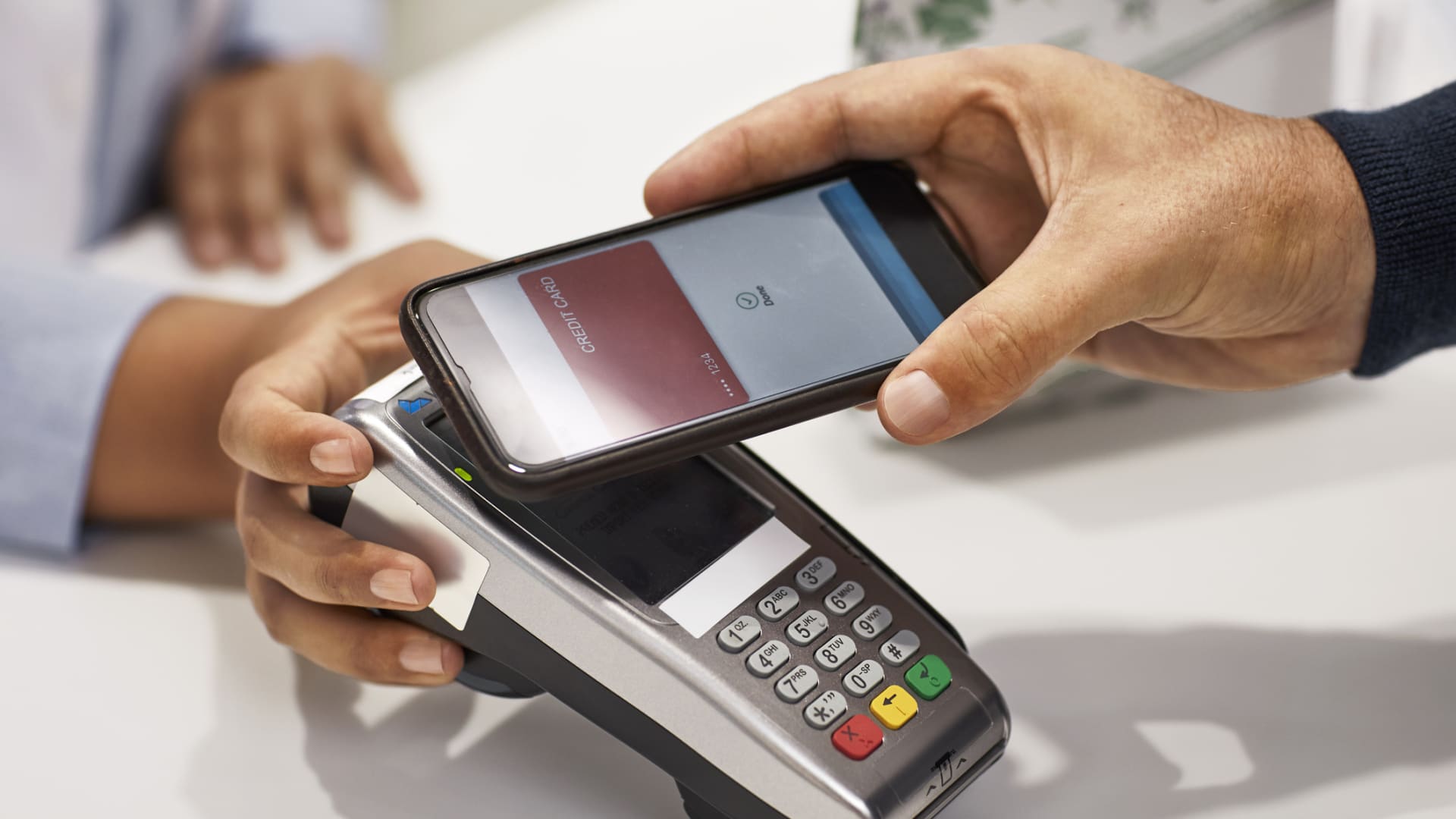In the face of inflation, rising interest rates and slowing economic growth, there’s more competition than ever for consumers’ cash — and even how their purchases are made.
Now, several of the large banks behind Zelle are teaming up to create their own digital wallet in a bid to compete with Apple Pay and PayPal, according to a recent report in The Wall Street Journal.
The move is seen as an effort to slow Apple‘s push into consumer financial services, marked by the recent introduction of Apple Pay Later, as well as an interest-bearing savings account administered by Goldman Sachs.
More from Personal Finance:
Generation X carries the most credit card debt
What it takes to get a near perfect credit score
More than 1 in 4 checking account holders pay fees
“The big challenge for banks will be providing something unique enough to grab attention and convince people to use their solution rather than well-established services such as Apple Pay and PayPal,” said Ted Rossman, senior industry analyst at Bankrate. “I think that will be an uphill battle.”
What the war over your wallet means to you
“The pitch for consumers is an easier online checkout experience,” Rossman said. “You won’t need to enter all of your card information because it will already be saved in the system.
“And it will be managed by the banks, which will in theory have better fraud protection than retailers.”
The good news is “they are already a regulated sector,” added Pam Dixon, executive director of the World Privacy Forum, a nonprofit research group, in contrast to the equally popular buy now, pay later programs.
However, “consumers still have to be really careful,” Dixon cautioned. “This is your financial information.”
Digital payments soar in popularity, but are they safe?
During the pandemic, shoppers showed a growing preference for cashless transactions and still do: Peer-to-peer payment apps — known as P2P — such as Zelle and Paypal’s Venmo, which let users store their banking information on their smartphone, have exploded in popularity.
Now, 64% of Americans use peer-to-peer payment apps, although for young adults that jumps to 81%, according to a March 2022 survey by Consumer Reports.
Roughly 40% of the more than 2,000 people polled said they use payment apps at least once a month, while 18% use them at least once a week.
Digital payments are generally more secure than credit card transactions because there’s a biometric component, Rossman said — “this online solution will likely have some sort of two-factor authentication, like a code sent via text message.”
But it is not without risk. Users are vulnerable to fraud or scams or can lose money if they accidentally send a payment to the wrong person, a Consumer Reports analysis found.
And peer-to-peer payments still have varying degrees of consumer protections, which could cause an issue when it comes to getting a refund.
Trying to get money back into your personal account after it’s been transferred to someone else may require more work compared to requesting a refund with a credit card company, which often reverses charges almost immediately and fights on your behalf.
“It’s kind of like getting the toothpaste back in the tube,” Rossman said.
‘Let the buyer beware’
Zelle, in particular, has been the subject of recent criticism. A U.S. Senate report last fall stated that “Zelle is rampant with fraud and theft, and few customers are getting refunded — potentially violating federal laws and consumer rules.”
The Consumer Reports analysis included a call on policymakers to strengthen consumer protections. “There is a lag between the protections available to consumers and the latest technologies for payments,” said Delicia Hand, director of financial fairness for Consumer Reports.
In the meantime, “payment providers can raise the bar for consumer protection by taking more aggressive steps to minimize user risks,” Hand added.
If you have never used a digital wallet before, make sure you do a couple of test runs and do not send large amounts.Pam Dixonexecutive director of the World Privacy Forum
Contrary to those findings, “99.9% of the 5 billion transactions processed on the Zelle network in the past five years were sent without any report of fraud or scams,” the American Bankers Association, Bank Policy Institute, Consumer Bankers Association and The Clearing House said in a joint statement.
And in every instance in which a customer disputes a transaction made via Zelle, banks are obligated under federal law to investigate and provide reimbursement if the transaction was unauthorized, the statement said.
For now, Dixon offers consumers this advice: “Let the buyer beware.”
“If you have never used a digital wallet before, make sure you do a couple of test runs and do not send large amounts.”
Also, adjust your privacy setting to minimize the amount of information that companies are collecting, Hand advised.
